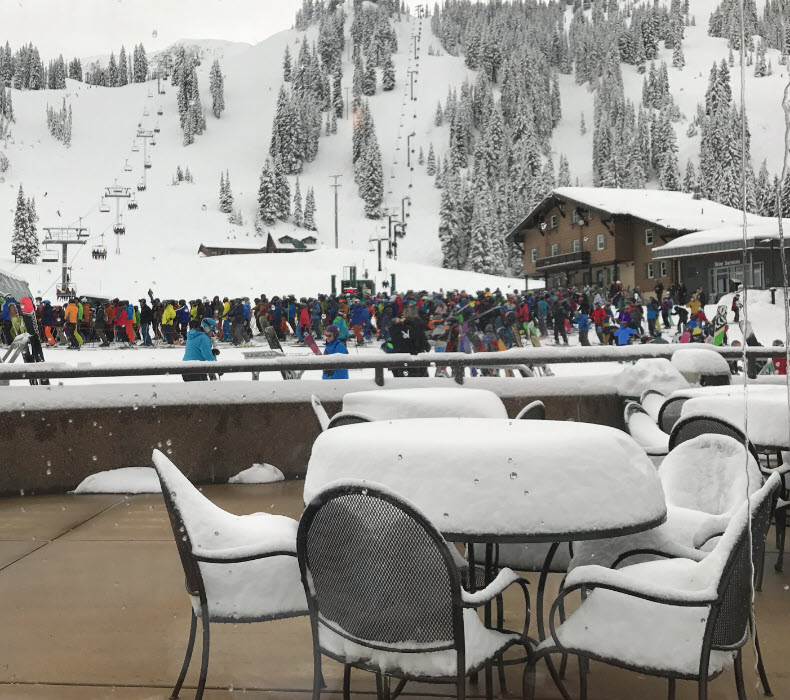Expert Skiing In The Wasatch
The Wasatch Range is the western portion of the Rockies. The Wasatch is to American skiing what Jerusalem is to Christianity and Judaism. No offense to Salt Lake City: home to the Mormon faith. The religious overtures are intended. It’s hard not to have a spiritual experience on Utah snow. The Wasatch is home to 14 ski resorts. Eleven are stretched out between Sundance (northern Utah County) and Powder Mountain (Ogden). Just 25 miles from downtown Salt Lake City is Mecca: the Cottonwoods. The location of Alta, Snowbird, Brighton, and Solitude.
Why Mecca? Try 550+ inches of annual snowfall, frequent snowfalls (a foot a week during ski season), 8.5 percent snow density (super light powder) and monster snow dumps. It’s a skier’s holy trinity: quantity, quality, and frequency. There is simply no place in North America that has a higher probability of great snow on great mountains. For my Great North American Ski Adventure (GNASA) I chose Salt Lake City as my base. I spent 20 days skiing Mecca; 17 on my Powder Skis.

On my adventure, I skied Alta, Snowbird, Solitude, Brighton and Deer Valley. My Alta/Snowbird pass gave me access to Alta and Snowbird and three days at Deer Valley. My Max Pass gave me access to Brighton and Solitude. For details on these individual resorts, see my descriptions on their individual pages here: Alta, Snowbird, Brighton, Solitude, Deer Valley.
Overall these mountains share similar characteristics. The Cottonwoods are adjacent canyons, and there is frequent talk of linking them together by tram or gondola. They both benefit by steep cliffs and a kind of geographic micro-climate that seems to suck snow like a vacuum.
There’s a great site called Wasatch Snow Forecast (WSF) that keeps almost daily track during winter of how each storm impacts Utah ski areas. What ski areas get the most snow differs depending on each storms characteristics, and WSF tell you how each storm is likely to impact Utah ski areas. Generally, it’s an abundance of riches. But temperatures, direction, and moisture content dictate where the storms drop the most pow. So check out WSF. Their fearless forecaster Evan Thayer keeps thousands of Utah locals informed about how to plan their perfect ski day. It’s a must visit website for every avid Utah skier.
The Cottonwoods are canyons. There are two: little and big, often refereed to as LCC and BCC. These are real Canyons with narrow valleys and steep cliffs. I emphasize this because they are subject to avalanches and avalanche maintenance. That means the Canyons can be closed to traffic.
Utah books over 4 million skier days in a good year. The locals will tell you that the worst possible thing that can happen when headed up to an area from Salt Lake City is getting delayed or blocked by an avalanche or avalanche maintenance. The Utah Police maintain a Canyon Alert system. It’s a one-stop source of canyon traffic information. Subscribe via Twitter or Facebook. Directions are here:
http://updsl.org/page_canyonAlerts.php